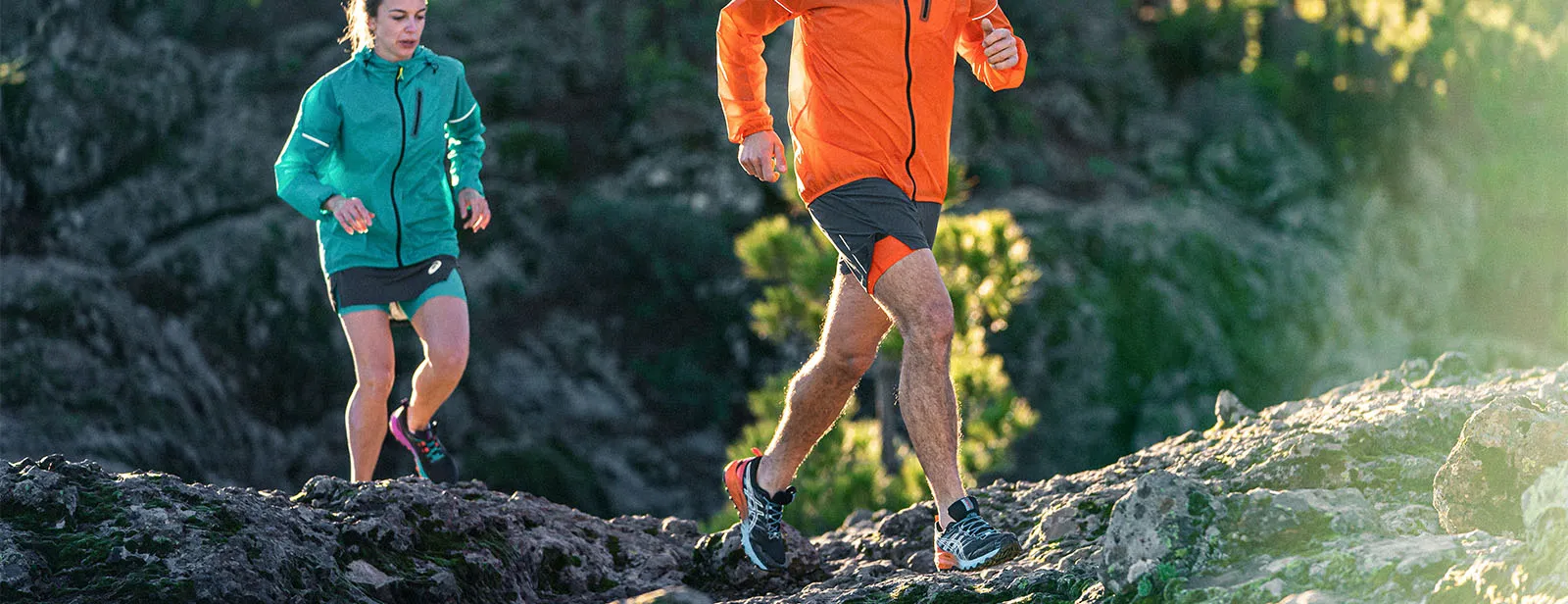
Trail Running Gear Necessities
November 14, 2016 / ASICS Australia
It's time to take trail running to the next step! Read more about how trail running shoes, clothing and backpacks make a huge difference when running in the outdoors.
1. Support your feet with trail running shoes
The most crucial thing is specialist trail running shoes. Out in the hills you need the right amount of grip so your foot doesn't slide on uphills and downhills – and if it’s raining, you need that grip even more.
2. Stay hydrated with a trail running backpack and built-in water supply
Your trail route might not pass by any fresh water source. The solution is to bring a backpack with a built-in water supply.
3. Move freely in trail running apparel apparel that doesn’t restrict your upper body
When you run uphill, you swing your arms more to power yourself forward. You might also move quickly to balance yourself over technical trails. It all means that your top needs to give you real freedom of movement.
4. Prepare for bad weather with trail running gear such as a packable jacket. Trail running sometimes means heading out into the wilderness so you need to be prepared for uncertain weather conditions. A packable jacket is made of water repellent fabric so it keeps you dry if the weather conditions lead to rain.
5. Protect your legs with trail running tights
With trail running tights, your lower legs are protected with tougher woven fabric. They’re also made of a comfortable, stretchable material that suits running over technical trails.
Stay protected with Trail Running Tights:
6. Stay on track with maps or GPS devices
Without any roads, you’re reliant on your orientation skills. A detailed map and a well working compass can give you peace of mind. If you have a GPS system, you can log your run and track your progress using RunKeeper .
7. Be ready for different terrain with a spare pair of shoes
You might encounter a range of different terrain on your run, so think about bringing two pairs of shoes with you. You can tackle the uphills with a lighter trail shoe. Then on the descent, you can pull on a supportive shoe with maximum grip.
8. Get nutrition with gels and energy bars
It’s essential to eat on longer trail runs, but you don’t want to be weighed down with a backpack of food. A good way around the problem is to take some small and lightweight energy bars and gels.
9. Keep your feet comfortable with gaiters
Trail running sometimes means going over gravelly and rocky terrain. Gaiters cover your shoes and stop little stones getting into them.
10. Shield your eyes with a lightweight running cap
For extra protection from the sun, a running cap keeps your eyes and face protected so you can stay focused on the terrain.